“Any sufficiently advanced technology is indistinguishable from magic.” I don’t know any serious amateur or professional golfer who doesn’t want to learn how to break par often. But learning how to break par for many golfers seems to be as mysterious as a great magic trick that has you scratching your head wondering how the magician just pulled off the great illusion before your very eyes. Breaking par can truly seem like a magic trick but believe me it isn't, because it is achieved by many golfers from young to old who have developed their game to a very high standard. These golfers employ certain specific strategies and skills that set up low scores more often, and you can learn how to as well.
They have what is called "the millionaire mind-set." In other words they focus their energy entirely on generating and increasing their wealth, and from there they work out how they will get it done! Turn the Idea of Breaking Par into a Belief To be a par breaking golfer you also need to think about breaking par often. It must be forefront in your mind and you need to be continually finding creative ways and means to achieve it. This is what every low scoring golfer does; they continually focus their energy on reducing their golf scores by reducing the mistakes in their rounds that makes it more difficult to break par, and they seek out the teachers, coaches and mentors that can help them achieve it. They believe that they can break par often, it is not a fantasy, it is reality because they make it so. And it is not something only mature golfers can do? There are many junior golfers under the age of 15 who can break par; so it is not a coming of age thing, it is possible for any serious golfer to learn how to break par with the right level of knowledge, skills and consistent practice. What is Your Par Average? Every successful amateur or professional golfer has learned how to master par. That is, they have learned how to produce a high percentage of pars in every round, and this percentage should be 12 pars or more per round on average. You can think of 18 holes as three games of 6 holes, and then understand that you must achieve 12 pars in two of the three games. In the last 6 holes you make your birdies and bogeys. To break par often you must learn to master your parring ability on par 3’s, par 4’s and par 5’s, and this requires that you develop the golf skills that will make it more likely that you produce 6 or more pars for each nine holes you play, or 12 pars on average for 18 holes. Anything less than this and it is not likely to happen. Do you know what your current par average is? Better still, do you know what your par average is for Par 3's, Par 4's and Par 5's over the past 12 rounds? You should, because until you start digging into your golf scores and extracting the critical data that describes the way you play Par 3's, Par 4's and Par 5's you will continually hit scoring resistance and frustration. For example, if you play par 3's poorly maybe its because you have a weakness hitting enough greens in regulation with your mid to long irons? Or maybe you aim at tough pins and when you miss the green you leave yourself with tough recovery shots. You see until you track your performances against par how will you know what you do? Coming SoonIncreasing your par average is the first key to breaking par often, and you will discover that crossing the 12 pars threshold will take you into new territory with your golf scores and will set you up to achieve your goal. Look at it like this; if you have 9 pars in a round, 3 bogeys and a double bogey, you would have to have 6 under in 5 holes to break par. You would need to have something like 4 birdies and an eagle, which is possible, but not probable. More pars per round just makes sense, and it also makes it easier to score low, doesn't it? The fewer pars you have in a round the less likely it is that you will break par. So how do you increase the amount of pars you generate in a round of golf? The simplest way is to reduce your bogey average and worse, and also increase your birdie or better average. Now I know that's obvious, but remember the par breaking mind-set I shared with you earlier? You have to focus all you energy on reducing bogey or worse in your rounds, and you need to build your game improvement strategies from this stand point to start with. Here's the key to remember; you should aim to have no more than 2 to 3 bogeys in any round of golf you play, and you need to almost completely eliminate double bogeys and worse from your game. Double bogeys and worse should rarely happen if you are going to be a par breaker.
Now you are probably thinking that this is far from easy to do, and you would be right, but you need to understand that to break par often you will need to reduce the mistakes (bogeys and worse) that you make in every round you play. Here’s a really simple way of working out your bogey to birdie ratio so that you understand where you are in this critical game improvement area. Total birdies or better divided by total bogeys or worse. Let me show you what I mean. Jordan Spieth ranked 1st in 2017 for the birdie to bogey ratio statistic, and in the 85 tournament rounds he played on the PGA Tour he made 358 birdies or better, and just 181 bogeys or worse. 358 is a bigger number than 181 right? More birdies than bogeys right? When you divide 358 birdies or better into 181 bogeys or worse you get a result of 1.98. Remember that ranked him 1st on the PGA Tour that year. If you go down the list from Jordan to Miguel Angel Carbello, Miguel ranked 173 in this statistical category, with his birdie or better score 196 and his bogey or worse score also 196 resulting in a score of 1.00. This means that his birdies or better result was cancelled out by his bogeys or worse result. Go even further down the same list and Rod Pampling ranked 186 in this important category with a birdie or better score of 223 against his bogey or worse score of 259, resulting in a .86 over par result. More bogeys than birdies. Can you see how important this is? I think you can see that the idea is to create more birdies or better per round compared to your bogeys or worse score if you want to break par often. Here’s a simple way for you to find out what your ratio is. At Pro Tour Golf College our formula for breaking par is described like this; < Par = Birdie or Better > Bogey or Worse You can create a table like the one below and track your pars and birdies or better in each round against your bogeys or worse and then using the par breaking formula work out where you stand currently. In the example above one of our golfers at Pro Tour Golf College had a Birdies or Better result of 27 and a Bogeys or Worse result of 45. When 27 is divided into 45 you get .60. (27 Birdies or Better ÷ 45 Bogeys or Worse = 0.60) I think that you’ll agree that this simple way to analyse your pars, birdies, bogeys and worse will help you to understand where your weakness lies. And when you understand your weaknesses you can make progress with well thought out and useful practice strategies. You see, before you go pulling your golf swing apart or changing some other aspect of your golf game take the time to understand your results against par and then work backwards from there. Next month in part 2 we'll take a close look at the way you should play the Par 3's, Par 4's and Par 5's to increase your par and birdie average and decrease your bogey and worse average by identifying the critical shot-making formula and key strategies that you need to learn that will help you to move your golf scores from over par and down into red numbers. Lawrie Montague & David Milne - Pro Tour Golf CollegeWe’re not talking about the basics of grip, aim and stance here; we’re talking about information that is very uncommon in the golf world, but common in many other sports at world championship level. Did you know that golf is one of the only sports where the “experts” still cannot make up their mind what the ideal model to teach is? In ballet, gymnastics and other highly technical sports they have adopted a model to teach upon, but golf still lags way behind. This probably explains why it's so hard to learn to play really well? As a former tour player, I never played consistently to my potential. In every round I played, I knew I left shots out on the golf course, and I really didn’t know how to improve. It also seemed like many of my fellow professionals were in the same predicament, and this led me to a career trying to find out what some of the answers were. There are lots of theories in golf books, magazines, DVD’s and on the TV on how to play golf. There aren’t many on how to play it really well. What’s the difference between playing golf, and playing it really well? In my opinion, it’s simply learning how to develop the skills to lower your golf scores. Demystifying Golf Improvement When you think about it, improving your golf game involves five factors that you have to develop a measurable degree of control over. At PTGC our students learn that one or more of these five factors will stop them from reaching their potential as a golfer. This is the same for you. Every stroke that you make on a golf course involves these five factors. The golf swing produces an impact or collision with the golf ball. The golf ball receives the information from the club head to travel forwards and upwards over a certain distance. This happens continually until the golf ball comes to rest in the hole, and the score is added up. The variable that affects your ability to do this is the environmental conditions. To improve your golf game, you need to improve your ability to control all five factors. We’re not concentrating on the golf swing, collision and ball flight part of the formula. What we are going to concentrate on is much more important; how you can train your game to lower your golf scores and become a much better golfer faster than you could have ever imagined. "To be honest, more than ninety percent of golfers we have witnessed, are wasting their time on the driving range because of the way they go about their work." The 5 Factors There is a cause-effect relationship within the five factors sequence that explains why some golfers achieve a great deal more success than others do, all things being equal. We call this “the golf success code,” and possibly this will be the first time you’ve seen it presented this way, but there’s a good reason for it; the majority of golfers we work with in our program don’t realise that these factors need to change in sequence if they want to improve their game. “Reverse every natural instinct and do the opposite of what you are inclined to do, and you will probably come very close to having a perfect golf swing.” – Ben Hogan That’s right, they would be arranged so that score is at the beginning instead of a golf swing. This would be followed by the ball flight, the impact or collision and then the golf swing. In other words we teach our students to build a better game with the end in mind--the score or outcome. Your Golf Score = Your Ball Flight = Your Collision = Your Golf Stroke ÷ The Environment I have witnessed many golfers working on some aspect of their golf swing without connecting it to a lower score – even the pros do it! You almost get the impression that they just want to get their practice over with, because they stand there and pound away at shot after shot. To be honest more than ninety percent of golfers we have witnessed are wasting their time on the driving range because of the way they go about their work. There is a better way. Tour Players Get it Wrong Too! Some years ago I was working with one of the players from the US LPGA tour and I was asked to hop on a plane and fly to the US for a couple of tournaments to help her regain some lost form. After spending some time on the range, I followed her around the golf course and tracked and measured every golf shot she played from tee to green. At the time her score average was a couple of shots higher than it needed to be for each round to comfortably make the cut and make some money. I analysed her results after the first tournament, (which she made the cut in) and sat down with her after supper and went through my findings. She was clearly of the opinion that she wasn’t putting very well because she believed she wasn’t holing enough ‘makeable’ putts to be competitive. I agreed with her, but said that there was something far more critical that she was overlooking; the effectiveness of her wedge play. On every hole that she played a wedge into the green over seventy two holes, I calculated the distance of her shot to the pin and wrote it down. After she played her shot I would race ahead of her group and measure the distance of her shot to the pin and note whether it was short, long, left or right of the hole. Then I would simply add up the putts on each green. What I determined from this analysis was that she wasn’t hitting the ball close enough to the hole to make the putts she was attempting. Her average distance from the hole was about three and a half to four metres or ten to twelve feet. From this distance a tournament professional will make less than twenty percent of these putts on average. The other interesting fact was that over seventy percent of her wedge shots were short of the hole, which made me wonder about the set-up of her wedges. It turns out that she carried a pitching wedge with a forty eight degree loft, a gap wedge with a fifty degree loft, when it was supposed to be fifty two degrees, and a sand wedge with fifty eight degrees that was supposed to be fifty six degrees. The eight degree gap between the gap wedge and sand wedge was creating distance control problems. My advice was for her to get her wedges adjusted, and start working on her wedge distance control. I developed a training plan for her and within three months she was making money and in a lot happier place mentally. Any golfer can improve their game if they start from the right end of the cause- effect relationship.
Writing a lower score on his scorecard consistently is the one key characteristic that distinguished Tiger Woods and other great golfers from all other golfers in the world. Great golfers have a score or outcome focus; whereas most advanced golfers we have worked tend to have a swing focus. What’s the difference? “A score or outcome focus enables golfers to continually find ways to improve their performances because they can work backwards looking at the different aspects of their performance to find the clues to lower scores.” In an article I read written by Steve Williams, Tiger’s ex caddie had this to say about keeping statistics; "I always keep a very detailed log of every round we play," "Stat-wise at the end of the day, end of the week, we know what we need to work on for the next round."
If you want to become a competitive golfer, you must develop the other critical success factors to lower your golf scores, and history has shown us that it’s not just about the full swing technique. Measure to Improve In business, there’s a well-known saying; “what you can measure, you can improve,” and at Pro Tour Golf College we don’t start working on the improvement process with our golfers, until we can gather enough information on their game to determine what, and how, we can help them with to achieve their goal. I was very fortunate as a young golf instructor to work with some very knowledgeable high performance coaches in golf, and particularly other sports, and it’s through this experience that I was introduced to a simple four step coaching model that they used to develop their athletes for International and Olympic competition. It’s a simple model that gives us a framework to guide our students improvement towards their goals. The 4 Step Model It is unlikely that you will have ever read about this model in any golf book or golf magazine. This model is the cornerstone of our golf instruction program, and guarantees that our student’s development is managed in a structured and well conceived way. Don’t be deceived by the obvious simplicity of this model, that’s what makes it a very valuable tool for guiding your improvement. Most of the golfers we know of do not have an approach to improvement like this. More likely, they have developed a random and haphazard approach, that is more reaction based, rather than pro-action based. If you want to improve your game, then adopt this model, and you will soon discover that with a highly structured approach to your improvement, your golf game will improve faster than any other way. Lawrie Montague & David Milne - Pro Tour Golf College Want to Know About The Unique Golf Improvement Program That Will Dramatically Transform Your Game?"Think about this question for a moment… If you don’t learn how to train under pressure on the practice range, what would make you think you will be able to compete competently under pressure on the golf course?" Where most golfers take golf lessons one at a time, reducing contact time to 60 minutes or less, at Pro Tour Golf College International we are in a privileged position to work with our students for more concentrated contact periods of 4 to 5 hours per day, for 5 days per week. This means that the students in our training program receive supervised instruction of 20 to 25 hours per week. Now, with this many contact hours each week, I’m sure you’d agree that we have a better than average chance of influencing the development of a student’s behaviour and skills, and as you will see, this contact time is critical for building confidence and resilience. When we created our Tour Bridging Program, we saw the value in significantly increasing contact time with our students, simply because the majority of students enrolled in our program were struggling with their game when under increased pressure and for most, there was no history of work on improving this aspect of their game. Virtually of all of them had been developing and perfecting their full swing technique. Based on this experience, we asked a simple question; "what do the students all have in common apart from their obvious emotional struggles when under perceived pressure?" The answer strangely wasn't what we expected. It was behaviour. We noticed was that while they were completing our skill assessments, most were lacking discipline for performing their routines and rituals to a high standard. They all enrolled wanting to improve their game, but not one of them had identified a lack of discipline for performing their pre-stroke and post-stroke routines as the contributing factor. This turned out to be their Achilles heel, which was that they were not aware that they were not aware. So there was no way for them to know what the root cause of their poor play was under pressure. They might describe it broadley as 'poor mental skills' but they really didn't know because no one had ever took the time to study what they were doing when they performed. Most of them blamed the obvious, poor swing mechanics as the contributing factor, because they had established deeply embedded beliefs that when they weren't playing well, their golf swing was likely the problem.  Optimal Performance Behaviour (OPB) We have come to some definite conclusions through our observations of top-class golfers over many years, and identified several behavioural traits from successful golfer to successful golfer that we believe influence optimal performance when competing on the golf course. Our OPB model is a set of behavioural guidelines we developed to help our students increase their awareness of ideal behaviour when they train, thereby influencing improved performance when they compete. Think about this question for a moment… If you never learn how to train under pressure on the practice range, what would make you think that you would be able to compete confidently and competently under pressure on the golf course? We think that's a reasonable question. Top class golfers (in-fact all elite sports people) display optimal behaviour in competitive environments, and through our E.Q. training process we have been able to develop and implement a set of behaviours that help our students to focus and perform far better, on and off the golf course. How to Build Optimal Performance Behaviour We always say that we might not be able to read the minds of top-class golfers, but their behaviour never lies. Our model helps students to learn this Optimal Performance Behaviour, which influences much better performances when they compete. So, what does optimal behaviour look like? Well, top class golfers display highly disciplined mannerisms when they compete. In other words, they act a certain way when they are competing. In-fact, top class golfers often look like military commanders, as they go about building their score during a round. Now, by no means is OPB consistent from golfer to golfer—it does vary, but not a great deal. It is more similar than it is different with top class golfers. These top class golfers follow a simple, consistent and unconscious neuro-physiological process that influences optimal behaviour under pressure. The process appears to work like this... 1. They generate a positive thought based on a question like this; "what do I want now?" 2. This positive thought accesses an associated feeling (this thought and feeling can seem as one). 3. This feeling is acted upon, and a behaviour occurs. (the feeling and behaviour can seem as one) This Thoughts--Feelings--Behaviour (T-F-B) process is a useful--albeit simplistic model that helps you understand how your behaviour is generated. Now, consider that this unconscious behavioural process occurs in milliseconds, and there lies the problem that all golfers face. As many of the behaviours you generate on the golf course are habitual--that is, they occur quickly without conscious thought, they can do a lot of damage before you become aware of them. So, our core strategy is to train our students under enough pressure that their ‘ugly’ golfer emerges—that’s their golfer identity who continually sabotages their game when things get uncomfortable on the golf course. When their ugly golfer emerges, we make our students instantly aware, over-and-over so they work on altering the feelings and behaviour quickly. We do this by providing them with a different--more helpful behavioural strategy, one that circumvents their normal 'ugly' T-F-B process for a more useful one. This is the main reason we believe in spending more time with our students rather than less, because we have found that this IS the biggest reason why many good golfers break down under pressure on the golf course in tournaments. We believe that having 30 to 60-minute golf swing improvement lessons in an environment devoid of pressure, is asking for trouble on the golf course. 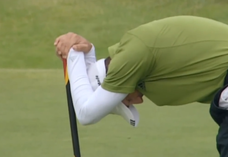 The ugly golfer is observable in golfers with low E.Q. and it hijacks their positive-optimistic feelings about their golf, turning them negative, consequently influencing behaviour that produces poor shots especially when under increased pressure. We teach our students the A.C.T model to help them start to by-pass the unwanted behaviour quickly and effectively. Here are the three steps in the A.C.T. process. A = Acknowledge the unwanted behaviour. C = Change it into a more useful behaviour in the appropriate context. T = Take a deep breath, countdown deliberately from 5 to 1, and then get on with the game. The key to success on the golf course, when competing under pressure, is to understand that even after negative thoughts and feelings have been activated, it doesn’t necessarily mean that you must act on them. There’s a space between thoughts (stimulus) and behaviour (response), where you can act in a more useful and indeed helpful way, and by using the A.C.T model, our students can take charge of unwanted, disempowering or disruptive behaviour, turning it into Optimal Performance Behaviour. "These training routines are designed with varying degrees of difficulty from moderate to extremely difficult to complete, and are designed to intentionally break our students down emotionally, so we can observe the way they deal with this adversity."  The C.H.E.N Model As our students are developing their OPB, we introduce our next model, the C.H.E.N model. C.H.E.N drills and routines are mental toughness training routines that we designed for our students to specifically stretch their patience to bring out their ugly golfer. These training routines are designed with varying degrees of difficulty from moderate to extremely difficult to complete, and are designed to intentionally break our students down emotionally, so we can observe the way they deal with this adversity. C.H.E.N stands for; C. Courage – The courage to start the drill/routine and complete it (Some of them are very difficult to complete) and can take hours, literally. H. Humility – You need a high level of acceptance when performing the C.H.E.N drills/routines as you will fail to complete them many times. C.H.E.N teaches students the meaning of being humble, to accept that you can do your best but not necessarily get the result you want. E. Enthusiasm – The key to successfully completing the drills/routines is to maintain an optimistic attitude despite continual set-backs. This is very challenging for our students, because they suffer from a variety of emotions, and a breakdown in focus, means that they have to start the routines all over again. N. No Mind – In Zen culture, Mushin, is a Japanese word that loosely translated means “the mind without mind,” and is often referred to as the state of "no-mindness.” Mushin describes a state of mind that is not fixed or occupied with thoughts, or emotion, so that it becomes open to everything. The goal of our E.I. training program is for our students to ultimately achieve a level of No Mind, where they become free of thoughts of anger, fear, or ego during their training, and when they are competing. Our C.H.E.N routines establish situational performance constraints that make it harder for them to achieve their goals. Situational performance constraints, like C.H.E.N routines, help us to determine whether a student’s general behaviour in training is consistent with their behaviour when under increased pressure on the golf course. In most cases they are vastly different. We know that setting up a practice environment that restricts choices such as with our C.H.E.N routines, will initially have a negative effect on a student’s development. However, this uncomfortable and temporary state changes as students learn to adapt and advance from an immature E.Q. state, to a mature E.Q. state. "In simple terms, the practice environment must challenge golfers in ways similar to what they would experience on the golf course when competing, otherwise it is not a supportive and well-designed practice environment." Design the Training Environment to Fail Often In our experience, many golfers limit their potential to improve—especially emotionally, because the practice environment they train in offers little in the way of challenges to increase their capacity to perform optimally, particularly in pressure environments. We developed the following formula P = M x C x SC – I to constantly remind us of the need to design a challenging yet supportive training environment for our students. Performance = Motivation x Capability x Situational Constraints – Interference In simple terms, the practice environment must challenge golfers in ways similar to what they would experience on the golf course when competing, otherwise it is not a supportive and well-designed practice environment. Think about the components in this formula for a moment. Motivation; Capability; Situational Constraints; The lack of interference of the wrong kind. 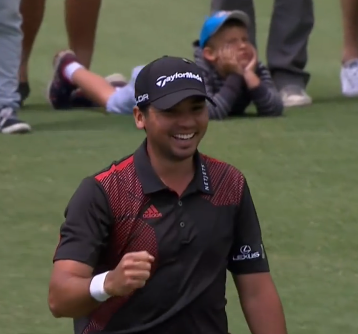 If you want to improve your performances in tournaments, then you need loads of motivation, multiplied by your skill to play the shots in challenging practice environments devoid of interference of the wrong kind. Here are the elements in the formula; A. Loads of motivation to work hard for as long as it takes. B. Well-developed golf skills that can almost match the types of shots you face on the golf course. C. Random practice stations are set-up to replicate the types of situations you would face on the golf course. D. The environment should be devoid of interference that you would not face on the golf course like mobile phones etc. When students practice at our purposely designed facility in Jakarta, Indonesia, they are exposed to every type of situational constraint, or limitation, they are likely to face on the golf course. We encourage them to explore the many ways they can solve these challenges on their own (in most cases) to make progress. Limiting choices in the way golfers practice, limits their potential to grow. E.I. training offers our students more choice as to how they can deal with the multitude of challenges and variables involved when competing on the golf course under pressure. Lawrie Montague and David Milne – Pro Tour Golf College The goal programming process we use in our training programs at Pro Tour Golf College define the core training factors in our E.I. training process and were developed based on The Logical Levels of Change model created by Robert Dilts, an organisational psychologist and one of the early developers, authors, and trainers in the field of Neuro-Linguistic Programming (NLP). 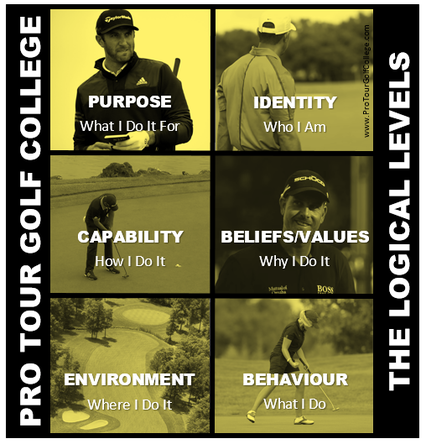 The Logical Levels of Change Model The “Logical Levels of Change” model is based on Dilts extensive research into change and organisational learning and was influenced and adapted from the work of Anthropologist Dr Gregory Bateson, and it has many different applications. We use The Logical Levels of Change model to guide our students in identifying the factors that promote—or even limit their goal effectiveness. The Logical Level’s model describes six levels, with each level helping our students to understand the link between what they think, what they do, and the results they achieve, on and off the golf course. Where I Do What I Do The base level is the Environment level, which describes location, or where you are, and what’s around you. One of the key questions we ask students at this level is; “how does where you are, including the content of the environment, affect what you do?” What I Do, and Where I Do it This environment question leads them into the next level of the model, the Behavior level, which describes what our students do, or how they act in the environment they train—or perform in. How I Do What I Do, and Where I Do it The next level is the Capability level. Now, if Behavior is the act of performing, then the capability level is the level where they know (or don’t know) how to do what they do. This is the ‘how to’ level of behavior in the environment they train or perform in. Why I Do What I Do, and Where, and How I Do it After this level comes the Beliefs and Values level. As you will see, Values drive our purpose. Values define the ‘what’s important to me in my golf?’ questions. Beliefs, on the other hand, describe what a student believes to be true about them-self, and also what they believe they are capable of doing, and what they believe about other people and their beliefs. Who I Am, Why I Do What I Do, and Where, and How I Do it The next level is the level of Identity. This describes the ‘I’ part of you, or who you believe you are—your sense of self. Identity relates to your self-image, the mental model you have of yourself, your self-esteem, and your individuality. The Overarching Purpose That Explains How I Know Who I Am, Why I Do What I Do, and Where, and How I Do it The final level is the level of Purpose or Spirit. This is the level where you recognize that you are a part of something much greater than yourself, it could be to achieve your greatest golfing goal, such as a goal that would define you and your life, or something much more significant to you, something you feel deeply connected to, and something that you could dedicate your whole life to. Some great questions are created using The Logical Levels of Change model, and these questions help our students to gain the clarity to start designing their goals. The following questions are examples of the type of questions that cover The Where, What, How, Why and Who of the goal programming process. Take the time to write these question down and answer them. It will help you to develop the clarity you need to design your goals.
The Goal Formula That Defines Your What, So You Can Design the How, Based on Your Why Well-formed questions help students define specifically what they want, so they can develop the strategies and tools necessary for performing closer to their expectations.  The goal formula above helps our students to understand the critical to performance factor that bridges the gap between their goal or intention, and the action they take. We prefer to describe goal setting as goal programming because we see the achievement of goals as a mental conditioning or programming process, and as such we use a simple three-step process; 1. Define what it is you want from your golf (The What) 2. Design the process for achieving what you want (The How) 3. Dedicate yourself to achieving what you want (The Why) The goal programming formula defines the master key to achieving your goals within the goal process, because every golfer has a dream of improving their game to a certain standard, but it seems that few ever turn the dream into the skills or game they really want. A well-designed goal process takes your dream, applies a set of specific action steps that eventually makes it real. So, for your behavior to be consistent enough to experience the Achievement, or accomplishment of your goal, the formula requires that you employ a high degree of Dedication, or persistent effort. No surprises there, right? Notice that the formula has an input end... D = Dedication, and an output end... A = Achievement? This describes two of the known elements in a goal process—inputs and outputs. But what it doesn’t tell us is the source of where the motivation to keep the inputs continually coming in originates from... We know that many golfers who start out on the journey to golf improvement, give up along the way, but the serious one’s stick with it for the longest time. These golfers usually take consistent lessons from the same golf teacher over many years, and apply long hours of effort on the practice range primarily because they are clear on what they need to improve. They don't hope to see improvement in their game, they know it will happen. The most common development pathway used by golfers is described in the image below. You take a series of lessons, you practice and play, and you hope that this leads you to performing better on the golf course. Many golfers the world over follow a process that looks just like this, so why then do so few perform better on the golf course? Well, in most cases they lose their motivation, through frustration of slow to no improvement, or because of consistent disappointment and set-backs, all of which has them giving up long before their goal of performing to their expectations is realized? We know how important Dedication is for Achieving goals. Yet, for the Dedication to be consistent, The Goal Value or what we call the heart of the goal, must be high enough, and also relevant to your needs. The bottom line is that you will never maintain the motivation to Achieve your goal if you don’t Value the goal (the what) highly, and you will never improve your performance on the golf course if you practice skills that are not pertinent to your needs (the why). Why is Golf Instruction Stuck at the Capability Level? Another reason why golfers don’t achieve their goals is because most golf teachers focus mainly on the Capability level of change? Yep, golf technique skills mostly, which doesn’t make much sense when you consider that golf is a multi-dimensional game… In other words, golf has many facets that have to be polished to become a complete player. So, for example, a golfer might want to improve a particular stroke pattern, and so the teacher dutifully goes to work altering or modifying it. Great! The golf stroke pattern is improved, so why does the student still play poorly on the golf course? Based on the Logical Levels Model the student is trying to improve many aspects of the game by improving just one level--capability. So the question becomes; when will the student learn how to build a supporting belief system that allows him/her to transition from practicing to playing/performing on the golf course? The Flawed Golf Improvement Model Let’s say that they can perform their stroke pattern successfully a high percentage of the time, but what happens when they hit one—two or more bad shots? Their behavior takes a turn for the worse because there was no safety net installed for the inevitable break-downs that occur in every golfer’s game. This scenario is typical, and extremely common at all levels. The amount of times we have seen a good golfer behaving in a textbook fashion until a few bad shots derail their confidence and composure is very common. You may know of golfers who have taken a series of golf lessons, or even attended a golf school, and in the beginning, there was a noticeable change in their skill (and behavior), but over time they reverted to their old and familiar ways. The Improved Golf Improvement Model The emotionally intelligent golfer understands that golf instruction without parallel development of E.I. training factors such as Behavior, Beliefs and Values, and Identity is a flawed development model that will not lead to playing closer to expectations on the golf course. Golfers who want to play better on the golf course, particularly when it matters most need additional tools in their tool box and that's precisely where E.Q training comes in.  Golfers in our experience who invest most of their time improving their golf swing and shot-making skills, but never get exposed to E.I. training, which exists beyond the capability level, are setting themselves up for certain frustration and disappointment. In our final article in this series (part 5), we will cover the final part of our Emotional Intelligence program including our O.P.B. model, the C.H.E.N mental toughness training drills, and our formula for designing a productive golf training environment. See you next month. Lawrie Montague and David Milne - Pro Tour Golf College Many golfers early in their development are indoctrinated into a cultural belief system perpetuated by the golf media and a percentage of golf teachers, where they learn to believe that to be successful at golf, you must have an excellent golf swing. The meaning behind this is that having an excellent golf swing means you will become an excellent ball striker, which further means you hit a high percentage of fairways and greens in regulation, and this will bring you much satisfaction and happiness. Yadda Yadda Yadda... There’s no doubt that because of this belief system, many golfers spend a great deal of their time perfecting swing positions through practice drills and routines, and hitting a high percentage of golf shots with the longest clubs in their bag, all with the goal of transforming themselves into a superman version of themselves—someone who swings the club technically perfect, and hits a high percentage of near perfect shots—whatever that happens to mean to them. You think I’m exaggerating? You know I’m not. A quick search on the internet around this type of motivation reveals that it is probably a mild form of delusional behavior. A delusion is a type of belief and behavior possessed by someone, that is held with strong conviction despite superior evidence to the contrary. So, the main feature of this syndrome is that golfers afflicted with this develop unshakable beliefs in something that’s not based on reality. "An excellent golf swing and shot-making ability doesn’t get close to solving the problems and challenges you face playing golf. Sure, it helps, but so does good putting. Let’s face it, no golfer however great he or she might be, hits most of their golf shots flawlessly, or swings the golf club with an extraordinary level of technical exactness." 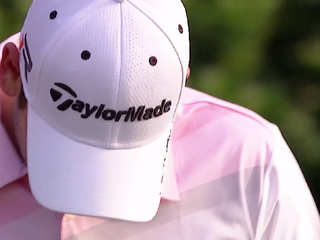 Have you noticed that many golfers who are accomplished ball strikers, and also possess excellent golf swings, are still no happier? Go to any minor or major professional tour event and you will see many golfers with excellent golf swings, and superb shot-making ability. However, what you will also see (if you look close enough) is that many of these golfers display the danger signs of long-term frustration and disappointment, because their shots that don’t go as planned. Look, it’s fair to say that we all possess mild delusions about things that we believe to be true, even when there’s evidence to the contrary. Nevertheless, you have to wonder whether this focus on the perfection of swing techniques and golf shots is emotionally healthy. An excellent golf swing and shot-making ability doesn’t get close to solving the problems and challenges you face playing golf. Sure, it helps, but so does good putting. Let’s face it, no golfer however great he or she might be, hits most of their golf shots flawlessly, or swings the golf club with an extraordinary level of technical exactness. So, based on this presumption, it surprises us that we continue to see advanced and elite golfers with an abnormal focus on perfection of techniques, and unfortunately for them, they never learn how to manage the down-side—the times when their shots don’t turn out as expected.  Think about this for a moment, if your focus is mainly on perfecting your techniques and shot-making, then when do you learn the Emotional Intelligence strategies and skills for managing the inevitable down-side? In our experience, this is missing piece of golf instruction improvement puzzle, and consequently, golfers are left experiencing everything from mild bouts of depression, to serious bouts of anger, and everything in between, basically, they display a low E.Q. (Emotional Quotient) We don't see low E.Q. with top class golfers however. These successful golfers have developed a special kind of short-term memory (they forget fast) when it comes to hitting shots that fall short of their expectations, whereas the many who struggle with their emotions, haven’t learnt how to forget nearly as fast. The missing piece in golf development is golfers learning Emotional Intelligence (E.I.) strategies and skills. E.I. training helps you to recognize the type of emotions that interfere with your golf performance, and it also helps you to manage these debilitating emotions by forgetting them faster. So, how do we help golfers build strong E.I. strategies and skills to help them perform better on the golf course—especially when it matters? "We find that this is a helpful starting point in building a relationship with them. The fact that their beliefs might be very different to ours is not nearly as important as our ability to see their point of view first. From this position, it is easier to get them to understand how we can help them with their perceived emotional problems on the golf course."  Using E.I Rapport Building Techniques In our E.I. training, the first step is building rapport with the golfers we work with by attempting to understand ‘their way’ of relating to the down-side that they are experiencing frequently. We recognize that the way they react to less than acceptable shots is the only way they currently know, and by acknowledging the reality of their situation, we can strengthen the bonds of communication and trust with them. We find that this is a helpful starting point in building a relationship with them. The fact that their beliefs might be very different to ours is not nearly as important as our ability to see their point of view first. From this position, it is easier to get them to understand how we can help them with their perceived emotional problems on the golf course. We believe that successful communication begins and ends with our ability to create and sustain rapport with our students, and when you think about it, we make most of our important decisions in life based on the quality of relationships we have, more than anything else. Do you buy a set of golf clubs based solely on the technical merit of the clubs, or, do you buy them through a process of building a relationship with someone you like and trust? You take regular lesson with instructors that you know, like and trust. It's about building a relationship first and foremost, because the simple fact is that you are more likely to buy into an idea or concept from a golf teacher/instructor that you like, respect and agree with, rather than someone you don’t. Pace Their Experience (Building Trust) Picture if you will racing cars travelling down a road all travelling about 80 miles per hour, with each car 2 feet behind the other. Now, imagine that whatever the lead car does the trailing cars do as well. If the lead car speeds up, or slows down, or swerves, the trailing cars do this as well. What the trailing cars are doing is 'pacing' the lead car, and you can see this pacing behavior in many aspects of nature. When we are building up rapport with our students as we coach them, we are pacing their behavior, by matching and mirroring the various subtle characteristics of their behavior. We will match and mirror their language patterns, and use the same key words and descriptive phrases they use, as well as match the tone and tempo of their voice. This rapport building strategy is one of the essential building blocks for promoting trust in the relationship. With trust, we can help them change unwanted behaviors to more helpful ones, faster and more effectively. Without trust, it is unlikely that we can help them change their unwanted behaviors. "We see this a lot with junior golfers who have parents who call all the shots, and never allow their child to learn in their own best way. This is where you see the roots of bad behavior, which often becomes a long-term emotional maturity problem." Inspire Self-Directed Learning Once trust has been established, we begin encouraging our students to learn and improve in a self-directed learning environment, which in its broadest sense simply means an environment where they take more of the initiative (with our help or without) for achieving their learning outcomes. In a self-directed learning environment, our students can select, manage, and assess their own learning activities, with the overall goal being that they take ownership for their learning. If they are solely reliant on us for what they learn, they never really learn how to take full responsibility for their learning, and more importantly, their behavior on the golf course. We see this a lot with junior golfers who have parents who call all the shots, and never allow their child to learn and develop in their own best way. This is where you see the roots of bad behavior develop, which often becomes a long-term emotional maturity problem. When junior golfers don’t take full responsibility for their behavior, as they mature, those early seeds of emotional immaturity often grows into an emotional hornet’s nest. So, one of the goals of our E.I. program is centered around students developing their self-knowledge, which is where they learn to gain a better understanding of how they trigger their negative emotions, and how those emotions affect their capability when they perform on the golf course. An example of one of the ways we use self-directed learning is getting students to design their own practice or training process before they start a session. We of course supply input (if they wish), however, the idea is that they get to decide what needs to be learned, and improved, based on their present (or future) needs.
By helping our students using a self-directed learning approach, we are helping them to think independently, and take ownership of the goal development process, so they can tap into more of their unique potential to play closer to their expectations on the golf course. In our next article (part 4) we will introduce you to our goal programming process which assists our students in understanding how well-defined and crafted goals fit into the overall process of their E.I. development. So you then. Lawrie Montague and David Milne - Pro Tour Golf College www.ProTourGolfCollege.com Perth / Jakarta The key to performing the physical/technical skills of golf when it matters, is through emotional intelligence. You see, there’s seems to be a very real difference between swinging the golf club competently to control the ball flight on a driving range, and to perform closer to your expectations on the golf course. In golf, we understand that this basically means your ability to control your emotional state in a way that allows you to access a peak, or optimal performance state, as needed. That's right, what seems easy enough to do in practice with many balls, appears to be more difficult when you have to hit just one ball. Hence, the peak, or optimal state. Emotional intelligence describes your aptitude for identifying, assessing and managing your emotional states in the various situations you face on the golf course, whether you’re competing, or not. A golfer who has largely developed his/her physical/technical intelligence, without emotional intelligence, will be found out when they compete. It is often suggested that competing alone teaches you the emotional intelligence skills you need, but this is simply not the case. If it was, then every golfer who competed in lots of tournaments would be handling situations under pressure like world class players do. And this is clearly not the reality that we experience working with golfers. "So, how do they deal with it? Many in our experience take more golf technique lessons. Or they fire their teacher, and find another teacher and take more golf swing lessons..." 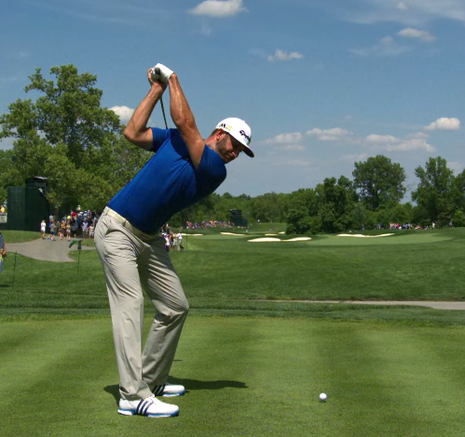 Dustin Johnson's success comes primarily from his exceptional Emotional Intelligence skills. Dustin Johnson's success comes primarily from his exceptional Emotional Intelligence skills. Yes, competing helps you to develop certain competitive skills, like getting used to performing in competitive environments, but it will not necessarily help you to manage the pressure situations that you will find yourself in. What we have found with the majority of golfers who have gone through our E.I. training program at Pro Tour Golf College that they were very low in emotional intelligence skills. In many cases, they were competent with their ball-striking ability and ball-flight control, and like many, they have been competing in golf tournaments from a young age. The trouble is that when they wanted to execute shots under pressure, their well-developed tournament experience and physical/technical skills would break-down or collapse. This often led to frustration, complaining, or getting angry. Now with all the money invested in golf lessons, travelling and competing at tournaments, and golf range practice, trying their best to improve their game, their shot-making ability would leave them at a crucial time, appearing to break down too easily. So, how do they deal with it? Typically many in our experience take more golf technique lessons. Or they fire their teacher, and find another teacher, and take more golf swing lessons... After going through this cycle for a while, some of them start to acknowledge that maybe the problem is centered more around their 'mental skills.' So they read a book or two from one of the popular sports psychologists, and hope it gets better. But it many cases, it doesn't get better, because a golf book is not going to change hard wired emotional habits that have developed over a long period of time. So, many enroll in our Emotional Intelligence program, or similar programs, primarily to gain access to emotional intelligence training, so they can learn how to manage these pressure situations more effectively. Your emotional intelligence determines your potential for learning and performing the practical skills that underlie the four Emotional Intelligence (E.I.) quadrants developed by Daniel Goleman in his Emotional Competencies Model (see below). Daniel Goleman's Emotional Competencies Model"So, your emotional competence just shows how much of that potential you have realized, by learning and mastering skills that translate your E.I. into effective golf course performance capability." You can see that there are 18 competencies contained within the four quadrants of Daniel Goleman's model. In our experience, we have found that golfers who manage themselves and their game more effectively emotionally, when competing under pressure, are strong in the six skills contained in the Self Management cluster in the lower left-hand quadrant. Now, the right-hand side quadrants of Social Awareness and Relationship Management are extremely important also, particularly for golf teachers / instructors and coaches, and we will address these in another article. So, your emotional competence just shows how much of that potential you have realized, by learning and mastering skills that translate your E.I. into effective golf course performance capability. Central to understanding your E.I. is to recognize that your E.I. can be improved when using a golf competency based framework. A golf competency based framework simply defines your tasks, responsibilities, and behaviors for developing and improving your golf skills for competing on the golf course. Our definition of golf competencies are the skill sets (physical/technical/strategic/mental-emotional), knowledge, aptitudes, behaviors, practice methods, personality traits and intrinsic drivers which have a predictive value towards a golfer performing more effectively in a tournament.  A simple example of how a golf competency based framework could help you in putting would be to measure short putting performance when your practice from inside 8 feet, as compared to when your competing in a tournament. For relatively straight putts let's say that you are holing on average 60 percent, and on side-hill putts you are holing 40 percent. So, for ease of understanding, let's say you hole 50 percent of your putts from inside 8 feet when you practice. Now, when you compete, and putt under pressure in a tournament environment, from the same distance range, you have discovered that you make about 30 percent on average. Now, based on this information, you could design a golf competency based framework for improving your putting skill from inside 8 feet, when putting under pressure. You'll notice in the above example how we measured results in two simple ways. We measured short putting performance as a percentage of success for holing putts, and we measured short putting success in terms of the level of competency you possess, ranging from not yet competent, to competent. We could also measure short putting performance in terms of how you respond differently emotionally when putting with and without pressure. We use Focus Band technology to help us achieve this, however, there a number of other training devices available on the internet for training E.I. such as Elf Emmit and Halo Sports. When you design your golf competency based framework, you can define and decide for yourself what your performance benchmarks are, and how you wish to measure them. From here, you can manage the skill development more easily. Now, as I mentioned above, the left-hand side box of Daniel Goleman’s Emotional Intelligence quadrants, contains the Self-Awareness group, and the Self-Management group, which are the E.I. elements that will help you and your golf game, when competing. The Self-Awareness group includes
The Self-Management group includes;
For the rest of this article we are going to focus on Self-Awareness (recognition) factors (highlighted in red), and also discuss one self-management technique you can us to get you over an emotional hump. We will also show you an example of a competency based framework we use for developing and improving your E.I. self-awareness for training and competing.  The Oracle of Delphi High upon the slopes of Mount Parnassus in Greece, lies the ruins of the Temple of Apollo, and it was here many centuries ago, that the oracle of Delphi resided. In ancient times, people from all walks of life would wind their way up the steep mountainside over a day, hoping for some words of wisdom from the priestess, in the temple’s inner chamber. Upon reaching the steps to the famous temple, visitors in those ancient times would be greeted by the famous inscriptions etched into the temple, “Know Thyself” and “Nothing in Excess.” What the ancients described as Knowing Thyself, is what we call, Self-Awareness. This is the starting point for developing and improving your emotional intelligence in golf. Self-Awareness is what Professor Howard Gardner describes as Intrapersonal Intelligence in his Multiple Intelligence's Theory. This area of human experience involves introspection, self-examination, and your self-reflective ability. It means that you have a deep understanding of yourself as you perform at golf, and what your current strengths and weaknesses are. It is also acknowledgment that you are a unique golfer and competitor, which means you understand the attributes and traits that you possess that makes you not only different from your fellow competitors, but also, where your competitive advantage lies. "Think carefully about this statement for a moment. How you judge yourself (verbally or physically) based on your performances on the golf course, and off, says a lot about how you judge your self-worth."  So, introspection is an altered state that allows you to self-examine--or to tune into your thoughts, feelings, and internal drivers. Self-Awareness Theory states that noticing ourselves and our behavior leads us to judging our behavior according to our internal standards. And it is this self-judgement of our behavior (performance), and how they affect our emotions, that needs to be addressed, and worked on, to become a more effective competitor under pressure. One of the things we say to golfers we work with is; "your self judgment = your self worth." Think carefully about this statement for a moment. How you judge yourself (verbally, physically or both) based on your performances on the golf course, and off, says a lot about how you judge your self-worth. Your self-worth (or self-value) is linked closely to your self-esteem, or how you feel about yourself. When competing, and not performing to your expectations, if you tend to punish yourself to the extent that it affects your future performances (behavior), on the golf course, then you need to develop a Self-Management Strategy to get you over this emotional hurdle quickly. Daniel Goleman defines self-management as "the ability to control or redirect disruptive impulses and moods" and as "the propensity to suspend judgement - to think before acting." Perhaps no part of E.I. is more vital than developing your ability to successfully manage your negative emotions or feelings, such as self-judgement on the golf course when things are not going as planned, so that is doesn’t overcome you and your ability to manage your shot-making. In order to change the way you feel about negative situations, you need to change the way you think about it. Self awareness begins with self-reflection, and the space between what you do, and how you respond to what you do, is the key to successful change. Here’s a three-step process that we use with students that you will find to be helpful for moving forwards on the golf course after you confront a situation that appears negative. The Golfer E.I. Skill Based Competency Framework A golf E.I. skill based competency framework is a model that broadly defines your blueprint for emotional excellence on the golf course. The framework can focus on one competency you wish to upgrade, or several, and can be designed and specifically applied to a range of situations you face on the golf course when competing. The goal of this process is to develop a high level of personal awareness about your feelings, and for you to become Emotionally S.M.A.R.T. so you can recognize and manage your emotions quickly and skilfully. You will also be able to recognize and effectively deal with other golfers and their negative emotions, when you are competing with them. Following is our Emotionally S.M.A.R.T. Golfers Guide for emotional excellence. When you design your skill competency framework, you might decide to use some--or all of these as goals or outcomes. There are four phases in our E.I. Training Framework that takes a student through the training process from start to finish. I will briefly discuss the steps involved in the Preparation Process and expand on the other aspects of the training process in the next article. THE PREPARATION PROCESS
 The Golf E.I. Competency Framework We design our competency based framework by beginning with the student completing the Golf Workshop Profile. The profile was developed by Bobby Foster, a management consultant headquartered in Columbia, South Carolina. Bobby is a former teaching professional and golf coach at the University of South Carolina where he coached several All-Americans including four players who played on The PGA Tour. Bobby is a Certified Behavioral Analyst specializing in the DISC Behavioral Style Model. You can go to www.mentalgolfworkshop.com and type 'protour' into the access code box to gain access to the Mental Golf Workshop Profile. You will find great value in the profile, and you receive a comprehensive 28 page report that is well-worth the small investment. "The beauty of this system is that our players get an accurate and comprehensive report without having to spend hours completing a laborious questionnaire. You sure get a lot for the time and money you invest in this process." – Dr. Greg Rose, Co-Founder, Titleist Performance Institute After a student completes the Mental Golf Workshop report at their home (and uses our access code), we are sent a copy of the results to study before they come to train with us. When we meet the student for the first time we have already got some very useful information about them and their E.I. capabilities from the profile. After meeting them, we put them on the FocusBand to get some objective data as to where where they are currently with their emotional states using the system to generate some objective data. We have been using Focus Band for years in our training, and find it to be a very practical, and an easy to use system, that's very easy for us to interpret. With FocusBand we can objectively measure where the blockages are in their pre-shot routine, on the range, and also on the golf course. This system is being used by a number of leading professional golfers on major professional tours and our students find it very helpful to understand what and how they need to experience to get into an optimal performance state to hit their shots. We Begin With the End in Mind So armed with the data from the Mental Golf Workshop Profile and the FocusBand, we sit down with the student to provide feedback to them before we begin the process by discussing the goals or outcome of their E.I. training program. Specifically, we discuss the importance for the student of recognizing that increasing E.I. will give them the results that they have been trying to achieve in other ways. We explain that their E.I. training process will closely align with their values, and that by building a strong belief system around developing excellent E.I. skills, that they will stay motivated through to the end of their training. When discussing the goal or outcome of the training, we make sure that they understand that this training process is like any other training they have participated in, and that it requires a high level of commitment. We need for them to realize from the starting point, that their expectations need to align with their commitment to the process, and to complete the training to the best of their ability. When we discuss the design of the training process, we ask them behavioral-based questions as these are more helpful for helping them to understand and develop the specific skills they need to make progress. We begin by asking them problem-focused behavioral questions that relate to their current behavior in specific circumstances on the golf course, and then we discuss how the design of their E.I. training process will change these behaviors. Then we flip the frame of reference right-around to discuss solution-focused questions where they will explain to us (using specific examples) how they will manage those situations behaviorally, when they are emotionally challenged on the golf course after completing the training. For example, the questions we ask might resemble these;
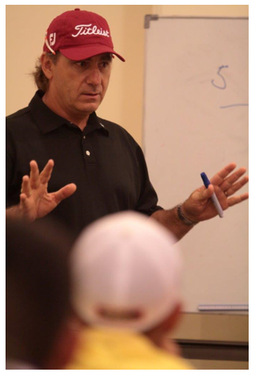 Once we have defined what improved E.I. behaviors would look like, we design the E.I. improvement process. Being outcome focused, but recognizing the importance of the specific steps in the process will get the student to the outcome is what this training process is all about. By the end of the E.I. training process the student will understand the following:
It is our hope that you are now beginning to have more of an appreciation for E.I. skills in golf. Our goal is for you to not only understand that E.I. skills are every bit as important as technical, physical, or strategic skills, but that you are developing them in your game, as you develop these other important facets of the game. Lawrie Montague and David Milne - Pro Tour Golf College Jakarta, Indonesia Recommended Reading List Frames of Mind: The Theory of Multiple Intelligences by Howard Gardner Books by Daniel Goleman Focus: The Hidden Driver of Excellence The Brain and Emotional Intelligence: New Insights Working with Emotional Intelligence Emotional Intelligence Is golf a difficult game to get good at? Now, consider that some in the golf instruction community might respond to that opening question by exclaiming that it’s not a difficult game to learn, if you learn it the ‘right’ way. Other's at the other end of the spectrum might say it is a very difficult game to get good at. There's no doubt that some will pick the game up and get good at it really quickly. Still, there are others who struggle with it, over and over, and never seem to make progress. Golf might just be an easier game to learn, if you learn the right way. The trouble is that the right way is often presented, or communicated, the wrong way. Are you confused yet... Well you will be after the next sentence... What I'm saying is that "the map is not the territory." Huh?... This interesting phrase was coined in the 1950's by Alfred Korzybski who was founder of General Semantics. One of the pre-suppositions of NLP, the map is not the territory is a metaphor that describes the differences between a persons beliefs (the maps) and their reality (the territory). Our perception of the world around us is being constantly generated by our brain, and can be considered as a kind of 'map' of reality written in neural patterns. (Source: https://wiki.lesswrong.com/wiki/The_map_is_not_the_territory)  Golf for many, is a difficult game to get good at because there seems to be many ‘right ways,’ or, different maps, for explaining how to travel through the golf territory safely. The map for a golfer teacher/instructor or coach describes their unique concept of, and description of golf basecon their experience, including--but not limited to what they consider their fundamentals of golf to be, and how they should be taught. Since every person playing golf experiences it differently, there will always be a multitude of ways of how to describe it, how to teach it, how to play it, and how to get good at it. One thing we can be pretty certain about, is that it seems like golfers who make continual progress, tend to work with instructors who use better or more effective maps. We consider that golf teachers who use better maps with their students, to be more flexible and adaptable with their communication style, to adjust to the differences in golfers learning styles and preferences, their beliefs and values, and their potential for improvement. The territory or reality part is that golf is a stick and ball game. This is the same for every golfer. It's not unlike many other stick and ball games, with the exception that most of these games are played with a moving ball. Golf, is played with a stationary ball. That makes it more like croquet, than say ice or field hockey.  Action You Make, Not Reaction You Take It also means that the thinking process in golf is different, in that it’s more about the action you make, rather than the reaction you take. A person playing golf must go through some sort of mental process to get themselves ready to strike a stationary ball, which is something people playing sports with a moving ball do differently. The other factor that has an influence on how the game is played is that many stick and ball games are played over a much shorter duration, often with a higher physical intensity component. Golf is played over a much longer duration, with a lower—intermittent physical intensity. In other words, instead of running around a field or court, golfers are often walking hundreds of yards between each strike of the golf ball. Also, many stick and ball sports are team sports, where you are sharing the experience of playing the game with team members, and collaborating with them to score as many points as possible. In golf, you are playing by yourself, even if you have playing partners. Your score is based on your ability to use a variety of skill sets in different and changing conditions to score as low as you can. Whereas many stick and ball games are played on a consistent and predictable playing surface—such as a tennis court, golf is played on an inconsistent and unpredictable playing surface.  Physical/Technical Intelligence or... A useful definition of learning is; the acquisition of knowledge through study, experience, or being taught. Golf is not a game of facts to be remembered though, it’s a game of highly specific physical/technical movements, with a golf club and ball, that you perform in an ever-changing environment full of various types of interference. Learning golf skills requires a kind of physical/technical intelligence, or what Professor Howard Gardner (of Multiple Intelligence's Theory) describes as Bodily-Kinesthetic Intelligence. The core elements of his Bodily-Kinesthetic Intelligence are control of one's bodily motions, and the capacity to handle objects skilfully. Professor Gardner expands on this to suggest that this also includes a sense of timing, a clear sense of the goal of a physical action, along with the ability to train responses. People who have high Bodily-Kinesthetic Intelligence should be generally good at physical activities such as sports, dance, acting, and making things. (Source: https://en.wikipedia.org/wiki/Theory_of_multiple_intelligences) So, this physical/technical intelligence that you acquire through practice, allows you to perform complex muscle-and-nerve actions that produce highly specific movements with your body and golf club, to propel golf balls towards pre-determined targets. This specific type of motion is described as a motor-skill, and the fine motor skills are the small body-club movements that you make to hit putts or chip shots, and the gross motor skills are the larger body-club movements you use to make full swings with a driver. Now, you can go to driving ranges and practice fairways the world over, and you will see golfers who competently swing golf clubs and striking golf shots with a reasonable degree of control. 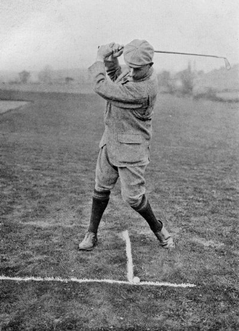 It's Still a Stick and Ball Game The basic premise of the game hasn’t changed in centuries. Basically, the ball is on the ground in front of you and you learn a variety of backwards-and-forwards strokes (short and long) with different clubs, to strike a ball, and you adapt those strokes to the changing conditions of the golf course, to score as low as you can against the par of each hole. That seems like a reasonable definition, doesn’t it? Where do you learn those different strokes however? In most cases, it is not on the inconsistent playing surface you will play on, and possibly compete on, but usually somewhere quite removed from that environment. This one factor alone explains why learning and performing at golf is quite different to most other sports, where you learn the sport in the environment that you compete in, i.e. you learn tennis on a tennis court, and you learn basketball on a basketball court. It is likely that the environment where you learn those golf strokes is relatively flat in nature, it could be synthetic, as opposed to organic, and it probably lacks the various types of interference that you confront on the golf course, such as tree’s, bunkers, hazards and water hazards, varying slopes and ground conditions, not to mention the weather conditions too. Those interference's are crucial—especially early into the learning and development process, because they influence how you adapt, acquire, and develop your ‘how to play golf,’ intelligence. Think about that for a moment… You see, we need to be challenged continually to grow, and adaptation is a basic requirement for growth. How do you learn to develop your 'how to play golf' intelligence in an artificial environment that is devoid of interference? Well, you will adapt, that is for certain, but probably not in the way that helps you to improve your game on the golf course. For many golfers, in our experience, this lack of the right type of learning experience, ends up becoming a gigantic obstacle that few ever really get beyond. "Physical / technical skill based learning must be integrated into an emotional intelligence framework, because golfers are sentient (emotional) beings-first and foremost, and certainly not humanoids." Imagine for a moment that a promising golfer was learning how to play golf in an environment that excluded all the interferences that they would face on the golf course? This golfer could be quite capable of executing the various golf strokes they are being taught by their instructor. However, when they go onto the golf course with these well-practiced physical skills and they encounter these different forms of external interference, it is likely that they will struggle to adapt. Not to physically or technically adapt, but to emotionally adapt—the internal adaptation. You see, even though some golf instructors believe that golf (the external game) is an easy game to learn, the reality for many is that it is far from easy to learn, and improve, because golfers are not just thinking beings who acquire physical golf skills to play the game, they are also emotional beings. In-fact, emotions underpin and dictate everything a golfer does on the golf course, from decision making to execution. Golfers need more than just a whole range of physical techniques to play golf, they need to develop their emotional intelligence techniques also.  You Are Human, Not a Humanoid So, we argue that it is not enough to learn physical/technical skills almost as if you program a golfer like a computer, where the golfer receives raw input data in the form of ‘how to’ instruction, such as learning P1, P2, P3 etc. and then is asked to perform more like a humanoid, than a human being. Physical/technical skill based learning must be integrated into an emotional intelligence framework, because golfers are sentient (emotional) beings-first and foremost, and certainly not humanoids. Learning and playing golf is much more of a humanistic (holistic) experience than it is a mechanistic (technical-deterministic) experience. So, golfers must learn how to translate and transfer their physical/technical skills confidently into emotional readiness, to confront the different situations they face on the golf course. In next months article we will introduce our Golfer Emotional Intelligence Framework that will show you how to integrate emotional intelligence into your physical/technical model. Lawrie Montague and David Milne - Pro Tour Golf College Jakarta, Indonesia  I make no apologies for being 'old school' when it comes to upholding the foundational values of golf--the etiquette of this great game. So I felt the need to post this because of a disturbing trend I'm seeing at junior golf tournaments and even at open events... I attend quite a few amateur golf tournaments both junior and open and I'm seeing something that I don't like and I'm sure many of my golfing friends on FB would also support me on this...and you can by sharing this after you read it. Let me get right to the point. R.E.S.P.E.C.T for fellow players. I notice frequently that junior golfers when they finish their putting walking straight to the next hole even when their playing partners haven't finished putting out. And believe it or not some are even teeing off on the next hole before their players have arrived at the tee!! I know that is hard to believe but it happens!  Often they are shadowed by an overzealous mother or father who knows very little about the 'game of golf' and who is busy talking to them about stats etc, and it makes me feel disappointed that there is so little respect for their playing partners that they are virtually ignoring them. There is no excuse for this type of behavior in golf, and there is no place in golf for it. I don't care that 'the game is changing,' this is simple respect for one another. As I said, I make no apologies for being 'old school' about this. Golf is a great and noble game and it doesn't need this level of behavior to grow and become the norm. I was having dinner with friends recently and one of them was caddying for the other at a recent women's open event in Perth. My friend (a professional golfer and PGA member) told me that in the event she was caddying for her friend, the golfers she played with on the day were all aged under 21 with one about 12 years old and she said she was dismayed at the lack of respect they had for each other in the group.  Golf is a great game...have fun when you play! Golf is a great game...have fun when you play! Walking off the green and going to the next tee whilst playing partners were still putting happened all the time, my friend actually felt for her friend because she might as well have been playing on her own. Not only that, she said she couldn't help noticing how unhappy they looked when they played, and the father of one of them was actually telling his daughter how to play shots on the way around, and even told her "this is a 2 putt green..." How will a golfer learn personal responsibility and awareness of others when this type of behavior goes on?... I know that I'm not the only golfer that witnesses this but I want to say something about it because I'm not seeing it addressed enough. It seems like many of these junior golfers are totally oblivious to the values that are the foundation of this great game. My friend went up to the youngest golfer and put her arm around her and tried to cheer her up but the girl just looked at her blankly as if she didn't know how to enjoy the game. How sad. If parents are reading this and have junior golfers behaving like this then do everyone a favor NOW and stop it. There's a reason why more than 50 percent of junior golfers will give up playing the game before they reach 18 years of age and as a golf professional who has been around junior golf for over 30 years I can assure you that it will happen. They will walk away from the game when they feel they can make the decision for them self. And as golf teachers / coaches etc it is our responsibility to teach young golfers about the values--the etiquette of this great and noble game. Stamp out this disrespectful behavior before it gets too late. I'm not sure what the game will look like if this behavior continues, but there's one thing for sure, I wouldn't want to play a game where you could be in a fourball but playing on your own. From the Randa Webpage http://www.randa.org/RulesEquipment/Etiquette/Behaviour-on-the-Course
Lawrie Montague and David Milne - Directors Pro Tour Golf College Inernational - Jakarta, Indonesia www.ProTourGolfCollege.com We have created a new part time and full time golf training program at
our private world class training facility in Jakarta, Indonesia for serious amateur golfers who are college bound and professional golfers who need to get their score average lower to attend a tour qualifying school. Contact us Today for More Information at [email protected] "My immediate thoughts were, “why would 4 totally different tour players be working on the same routine or drill?” I wondered how a very good golfer could be convinced to practice a method that his fellow competitors were also practicing." I recently had the opportunity to sit down to breakfast with a successful tour player who has played on tour for nearly 20 years, and I asked him a simple but powerful question that has been on my mind to ask, and I wanted to know his answer. This tour player currently has a world ranking in the top 200, and has won multiple times on major professional golf tours in the past 5 years, and has accumulated earnings of over 7 figures. So he seemed to me to be the perfect person to ask this question. “Knowing what you now know, if you had to start over again as a rookie, what would you do, differently (if anything)?” He paused as thought about it, then looked up from his bowl of cereal and said; “If I had my time over again, I would practice under pressure every chance I had…” “You seem pretty certain about that. Are you saying that you didn’t practice under pressure when you started out?” “I thought I was practicing the right way, but discovered late in my career that I wasn’t practicing anywhere near the right way, and was wasting much of my time.” “So, what was it that changed this situation for you, and how has it changed the way you practice and play?” 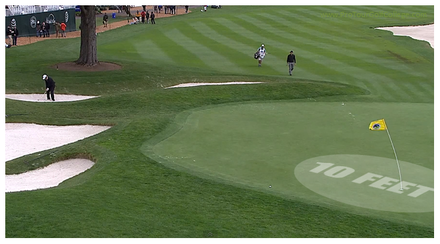 Pressure proof your practice to perform better when it counts Pressure proof your practice to perform better when it counts “About 4 years ago, I sought out a well-known performance coach in the U.K. who showed me how to practice under pressure. He explained to me that every time I work at my game I should practice under pressure using drills designed to do that.” “So he taught you specific drills to practice?” “Yes, he has lots of drills to put you under pressure, and he said that I should always practice with target zones around the hole for short-game and long-game practice. He also told me to record my results, and to measure my progress on an ongoing basis. It was the best investment I’ve ever made in my game.” Are You Building a Competitive Advantage, or Disadvantage into Your Game? While I was at the tournament I watched a coach working with 4 tour players over the first 2 days, and as much as it’s not unusual to see this at a tournament today, what was interesting to me was that they all appeared to be working on the very same drill or practice routine. See also: How You Can Build and Sustain Long Term Competitive Advantage Playing on the Pro Tour My immediate thoughts were, “why would 4 totally different tour players be working on the same routine or drill?” I wondered how a very good golfer could be convinced to practice a method that his fellow competitors were also practicing. I was at odds with seeing this, even though I knew that it was normal for tour players to work on perfecting their form to improve function, but why would they all be doing the same thing, the same way? Not to mention the fact that they were doing it prior to competing in a big tournament. Did this mean that they all had the very same problem with their golf swing? Or, were they learning a special technique to dramatically change the way they play? 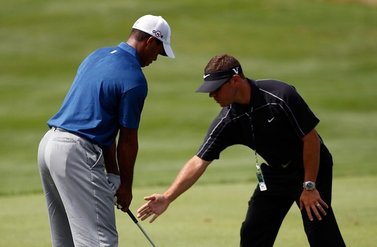 Does changing the outside change the inside? Does changing the outside change the inside? I was conflicted with what I seeing because I knew (based on the best advice I ever received as it relates to rapid personal change) that if you want to change what’s happening on the outside—then you change what’s happening on the inside. Now I know this approach is contrary to the way most golf instruction is performed, where most golf instructors are working on the outside (the technique) to change the outside (the technique). The trouble with this approach in our experience is that it can take a long time before you notice a change—if at all. So, here’s our best advice on personal change that you need to know and remember. If you want to change your behavior quickly on the outside, then you need to change how you experience it on the inside first.This means that to change your skills, or your perception of an event, then it’s is an inside job—not an outside one. This reminds of Tim Gallwey’s formula from his excellent book, The Inner Game of Golf; Performance = Potential – Interference. Principally, Gallwey say’s that to increase your potential to improve your performance, you need to eliminate or reduce distraction on the inside first. In other words, you need to remove the object that is in your way, and stopping you from performing your technique freely and effortlessly. So, if you want to score lower when under you're playing under pressure, then you would need to identify the object or thing that is obstructing your ability to do this. This object for many elite golfers is fear. It’s a fear of not achieving the results you want, or, a fear of missing the cut, or, a fear of hitting a certain kind of bad shot, or, it could be a fear of failing in front of others… Whatever it is, you need to understand that fear is an imaginary foe, and since it is a figment of your imagination, then that’s where you must deal with it—on the inside—not on the outside. If you notice that you are hitting too many bad long iron approach shots for example, then changing what you do with your swing on the outside won’t change a thing. Now I know that's going to ruffle a few feathers, but keep an open mind for a minute. The outside problem--the thing your notice is a reflection of the inside problem. You need to acknowledge the fear that’s present, and you need to understand how it is represented to you internally, and then you need to decide on the best method to change it. See also: Why You Should Never Make a Golf Swing Change Until You Perform a Benefits to Cost Analysis First  Confusing Preference Over Principle I think one thing we can all agree on is that every successful tour player uses authentic, and reliable methods, for getting the ball into the hole quickly, especially when playing under pressure. They know that the core principle of tournament golf is to achieve a low score average under pressure, and the preference for how you go about doing this is a secondary factor. The Key Learning Point to Remember: The principle of achieving a low score average under pressure is the first priority; and the preference for the method/s you use to achieve the first priority, comes second. Oddly, what we see too often is tour players and elite amateurs doing it the other way around, where they pick the method (their preference), first, and then they hope that with concerted effort they will lower their score average and become more competitive. Your score average goal, or score target range, determines what, and how you should practice. If you are building your game around drills and method to change something on the outside, then you are more-than-likely building a competitive disadvantage into your game. See also: The Golf Principle that Decides Whether You Will Be Successful at Making Changes to Your Golf Swing Technique or Not  Phil Mickelson knows how to score under pressure using his unique resources. Phil Mickelson knows how to score under pressure using his unique resources. The key question to ask yourself is this; “How is doing this drill on the practice fairway with no pressure, going to help me perform it when I have to, under pressure on the golf course?” The successful tour player I mentioned at the beginning of this article figured out that if he could score better under pressure using the resources he already possessed, then he would develop his unique competitive advantage. He identified that his competitive advantage was to practice under pressure to score better under pressure, which when you think about is logical, and it makes perfect sense. Interestingly, when I mentioned to him what I saw on the practice tee over the first 2 days of the tournament, he looked at me, grinned, shook his head slowly from side to side, got up, and went out to play. I thought to myself as he walked out the door that he knows something that many elite golfers will never get around to learning. Change always happens on the inside first. Lawrie Montague and David Milne - Pro Tour Golf College www.ProTourGolfCollege.com ----------------------------------------------------------------------------------------------------------------------------------- A Full Time, Low Cost, All Inclusive World Class Golf Training Program for Serious Amateur Golfers in Jakarta, Indonesia. Email us today at [email protected] for More Information on How You Can Train with Us and Reach Your Goals in Golf this Year. Author of the golf book 'Rocking the Fairways,' Richard Fish, in an except from his book discusses what he believes to be The Real Basics of Golf.  We're often told how we first have to learn The Basics, or "to go back to Basics," BUT WHAT ARE THE REAL BASICS OF GOLF? Before we begin, I'd like to highlight the difference between a Preference and a Basic, as my fear is that Preferences are often being taught under the guise of being labelled as a Basic. I'm hoping that, throughout this book, I'm able to show just how this can severely limit our possibilities to learn and find further development, while ultimately limiting our chances of ever finding our own full potential. So, a basic has to be something that is common to all good players, while a preference is something that is more focused around each individual in order to make it easier for them to be able to perform closer to their own maximum potential. When we take a look at all the great players, it's not difficult to see how they all appear to be doing things quite differently. While some of these differences are only subtle or even invisible, others are more obvious, but each one being vital to each individual player. This is especially worth noting, because each great player has come to swing, stand and grip the way he does, after thousands of hours of practice and trial and error, resulting in a way of playing that is personal and unique to them only, while being completely compatible with their own unique golfing DNA. If you were to then try and take away the personal identity of any particular player's swing and stance, then you are running the risk of severely limiting their potential, or even destroying their game entirely, which is not an uncommon occurrence among both Tour players and amateurs. Looking at these Preferences (which are so often taught as a Basic), can potentially help us in the following three different ways. Firstly, if a friend or an instructor tells us something that we either should, must or are supposed to do; by using these words, he has actually insinuated that it is a Basic, but it is almost certainly nothing more than a Preference. In this position, we could potentially question the reason why they have offered this advice? "When we take a look at all the great players, it's not difficult to see how they all appear to be doing things quite differently. While some of these differences are only subtle or even invisible, others are more obvious, but each one being vital to each individual player."  Also, once we're able to recognize any new advice as being nothing more than a preference, which subsequently may not have led to any positive results, we can now learn to reject it quickly, as it clearly wasn't a preference that was right for us. This may not seem particularly significant, however, as we've already said, many a player has been ruined by persevering with advice that is not compatible with his own golfing DNA. So, if it doesn't suit us or feel right, then quickly forget it and move on! This doesn't mean that the advice is always completely wrong, but it isn't right for that moment, or compatible with our present set of circumstances. Put it to one side for now, and we can always come back to it, should the need arise. Secondly, by highlighting some of these Preferences, this may inspire others to go on and do their own bit of intelligent trial and error and find their own best set of preferences. Just like the Tour players have done, we all want to find our own best set of circumstances (preferences) that make the job of striking a ball well as easy as possible, and gives us the best chance to maximize our own potential.  We would always recommend that this trial and error can be in all areas of the game, but preferably not the swing itself (at least not in any positional or mechanical way), as we'll see that the swing is actually only a Subconscious reaction to the type of shot we're playing, and all of the other sets of circumstances (preferences) that it has been presented with (if this is difficult to understand, I'm hoping this will become clearer later). And lastly, by recognizing and highlighting these Preferences, it will help us to narrow things down, and be able to find our only true set of Basics. If we can find the REAL Basics, we at least know what it is we are all trying to achieve. And this would really be a great start!!! Okay, here are some areas where all great players will have Preferences, which are then often bring taught as Basics, which we'll soon see, couldn't possibly be true. First the Swing.
The Stance and the Grip.
I will also add to this list.
 This is just a small and simple selection of many of the things that we're all told that we should or are supposed to do, and hopefully you can clearly see how all these things are nothing more than preferences, and should be treated as such. Above all, they should never be 'sold in' as anything else either, despite what many textbooks and coaches still often infer, as they could potentially become very limiting to our progress, as they are not necessarily designed around us - just as they're not for all the great players, and we're no different! So, what do we have left? What are our true and only real set of Basics, and something that ALL good players do? Firstly, they all have the ability to swing with fluid, coordinated and balanced movement, while being able to deliver the clubhead at speed and with perfect precision, that will subsequently produce the shot that was intended: The Flight of Intention. "Not all players have their head perfectly still, and this is actually an illusion that many of us are fooled by. A player's head appears to be stable and relatively still, as a result of having swung with fluid and coordinated movement, while the head will appear to be unstable and moving all over the place, when a player has swung with uncoordinated, jerky, and non-fluid movement."  In order to produce this speed at impact they are trying to produce a free flowing and non-manipulated swish of the clubhead, at exactly the right time, while trusting the ability of their Subconscious to deliver the clubhead with the exact precision that's required. Yes, all great players have built up this subconscious ability through time and practice. You would find that they could hit a pretty good shot with just about any technique, but the above is what we have to learn in order to strike a ball well and with control. Then we have our own preferences, which are simply to help us to make things a lot easier. So, that's it, these are our Basics, which are our starting point, that we need to learn and practice. The rest after this are nothing more than preferences. In short, we are trying to move with fluid coordination and balance, while delivering our clubhead with a free flowing and non-manipulated swish at impact. We are also trying to trust our Subconscious mind to deliver the clubhead with precision and in the right direction that will produce the intended shot, by being fully committed to the type of shot we have chosen and pre-decided. Just to be clear: a pre-decided shot for a beginner would probably be just 'forwards,' but as we progress and our subconscious begins to get the feeling for striking a golf ball, this can become a little more imaginative. Okay, I know this is probably not want everyone wants to hear. We live in a world where we want to analyze everything and get those concrete answers that we're all desperately searching for. However, please bear with me, because once we accept and understand that this is our only true set of Basics, this can help us more than it first appears, and is right at the very core of the Rocking the Fairway (RTF) way of thinking.  First, by understanding our only set of Basics, we can establish our first concrete answer that may be of use, at least to some. We now know that we are trying to swish or swoosh the club, in a timely manner, through impact. This would be impossible to achieve if our arms were stiff, rigid, straight and 'controlling.' Yes, we can immediately see how potentially harmful the advice of 'straight left arm' could potentially be. This doesn't mean that we all have to suddenly start trying to bend our left arms, but we could suggest that our arms felt relatively 'soft' and relaxed. Then, we could look at the grip, which is so often taught as a Basic, and clearly shouldn't be. Once again, in order to achieve our free-flowing swish, it would probably be just about impossible if our hands were split and far apart. So, we can now assume our hands have to be placed on the club closely together. Once we've done this, we now have the freedom to try any grip we like, instead of being locked into the small and very limiting world which we can now see many of us have been in. We will all probably discover how the grip is such a vital part of the process of finding our own true potential, but it is also very personal to each player. I know that most of the great players who now have unconventional grips, will have tried at some time or other, to conform to what they first considered was 'correct,' but found it impossible and that it was severely limiting their progress. I hope you'll agree with me here, and think that everyone should also deserve the same opportunity as the great players, instead of blindly following a set of guidelines that clearly need to relax and spread out a lot wider. Then finally, there is the thinking that is right at the very core of RTF thinking, and which has had such positive effects for those who have chosen to adopt it.  As we can see with our new set of Basics, swinging a golf club is quite a simple thing to do, now that we have lost so many of all the complicated set of instructions that previously burdened us. All we're trying to do now is to swing with as much fluid, coordinated and balanced movement as we can muster, while swishing the club in a way that will propel the ball forwards in the direction we had intended. It doesn't mean that we're all going to be tournament stars from day one, but then why would we expect to be? If we are learning any other sport, or even the piano, we wouldn't expect to be a concert pianist immediately, would we? And when we fail, it doesn't mean that we are suddenly 'doing something wrong' either. Any kind of new and complex movement that we're trying to learn and perform will take time as this program has to be learned deep within our Subconscious mind. Every time we practice something, our Subconscious is working out and adjusting all of the time, as it tries to perfect the movement that we're trying to achieve, and to the level of precision that we're striving for. As we've said, we are NEVER actually doing something wrong, because we're already capable of performing our new set of Basics to a level that will correspond directly with our own present level of development. We are simply finding it too difficult to repeat a movement that requires almost impossible degrees of precision with little margin for error, as often as we'd like. Pretty understandable I'd say. This means that any help or guidance that we might receive, will have to be designed to make things easier for us, and not because someone wants to teach a Preference that they believe is the 'correct' way to do things. This is the basis of the RTF way of thinking, and the beginning of our journey to find a better and more effective way to how we can all learn and improve, while also enjoying the game more, and gaining a deeper understanding of our subject. - Richard Fish (Author of Rocking the Fairways)  To contact Richard Fish for information on his More Mindful Coaching Programs in the U.K. visit his Facebook Page Rocking the Fairways at https://www.facebook.com/groups/rockingthefairways |
Archives
June 2019
|
Proudly Supported By
Copyright © 2011 - 2018 Pro Tour Golf College
Website Managed By Golf Performance Media
All Rights Reserved
Website Managed By Golf Performance Media
All Rights Reserved

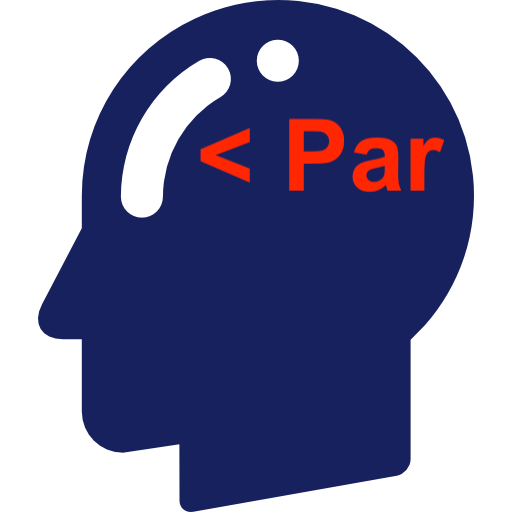









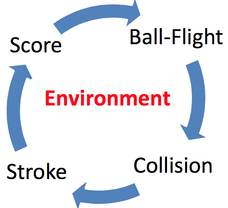

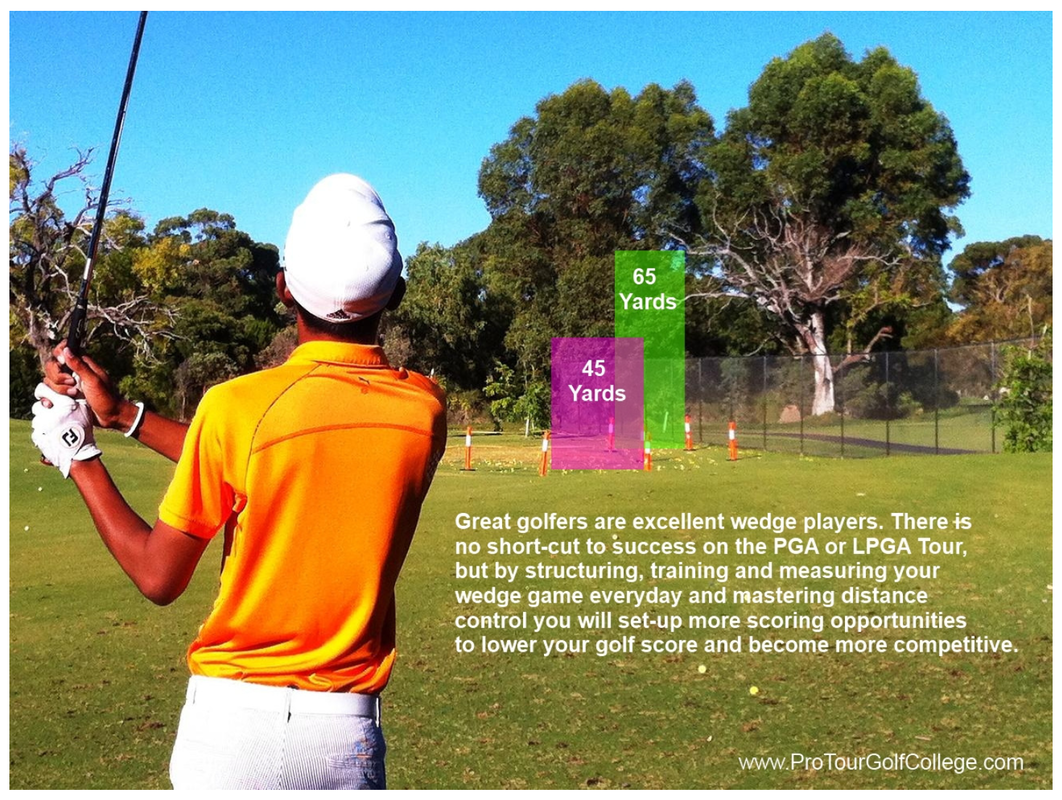

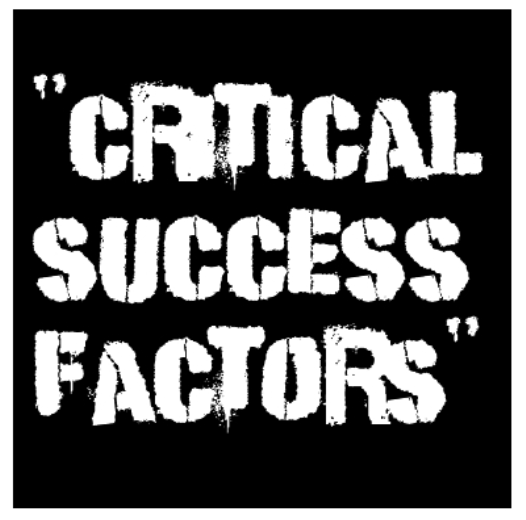










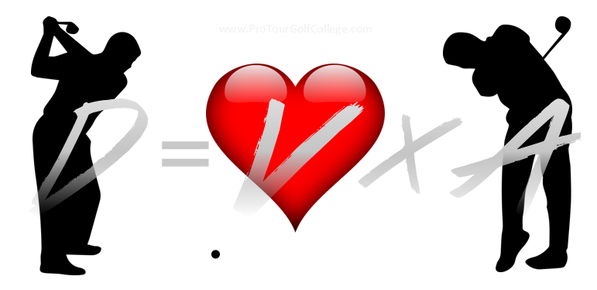







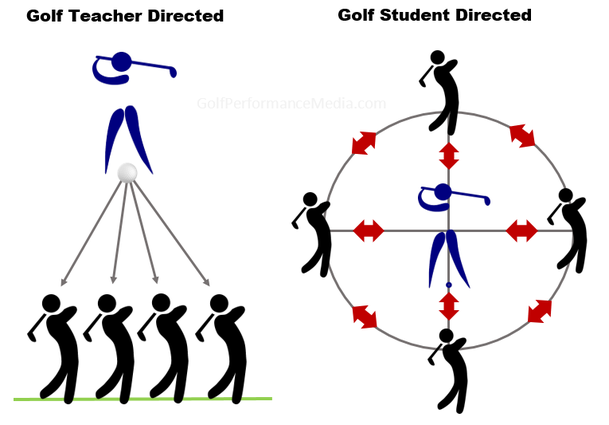




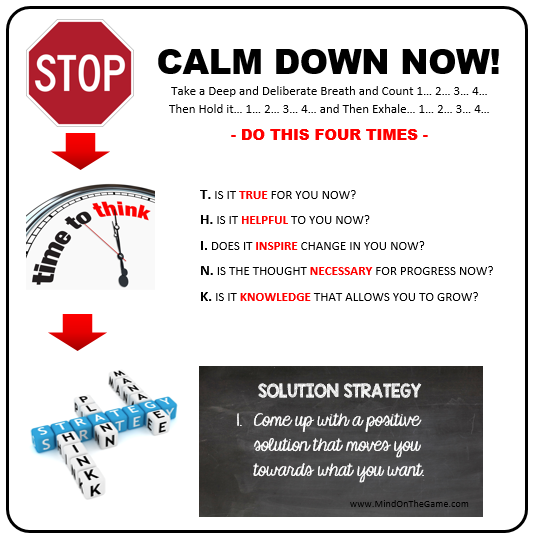




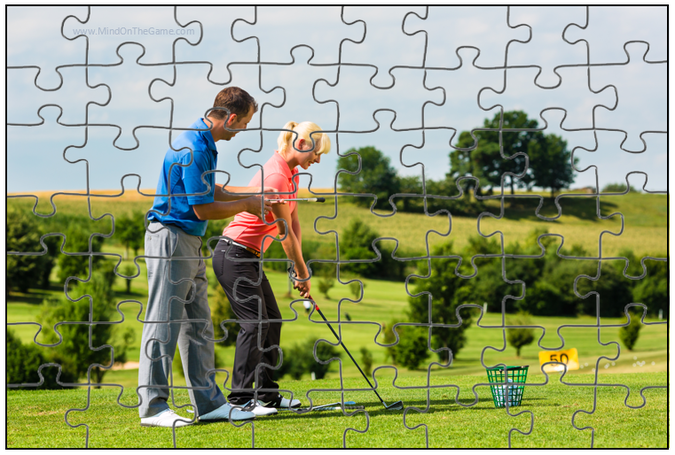






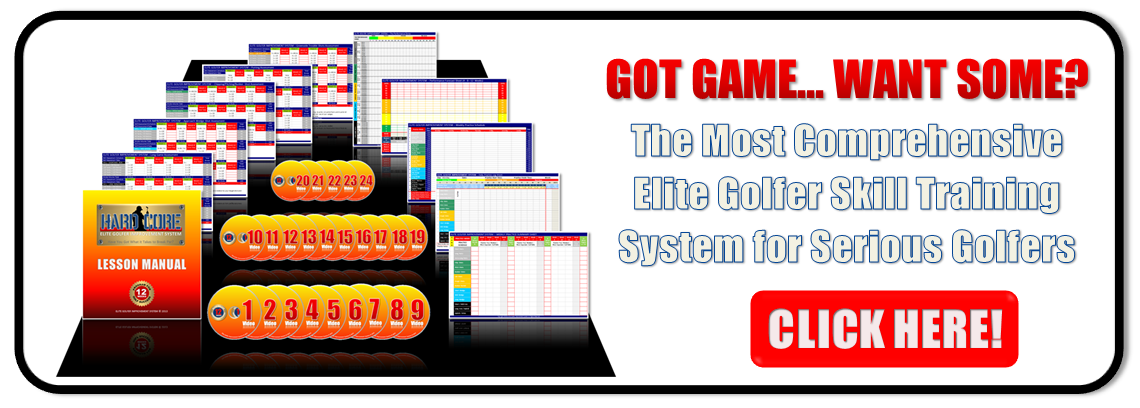
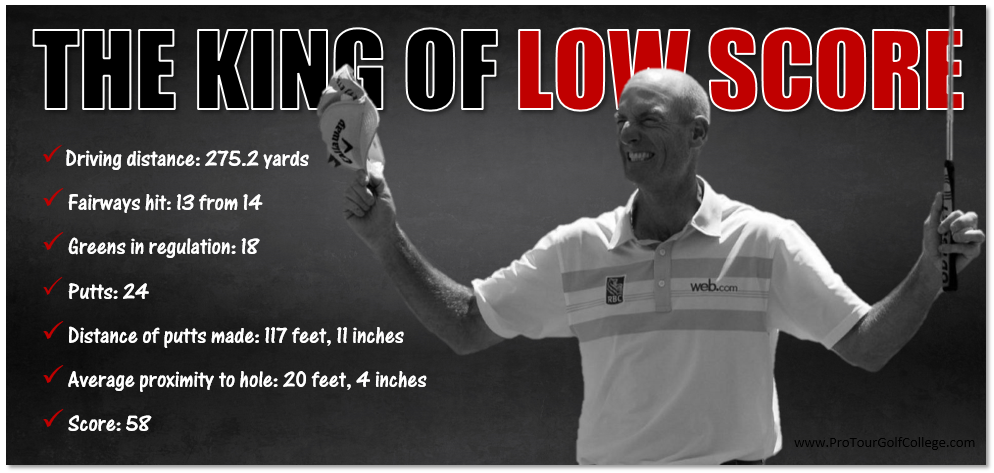
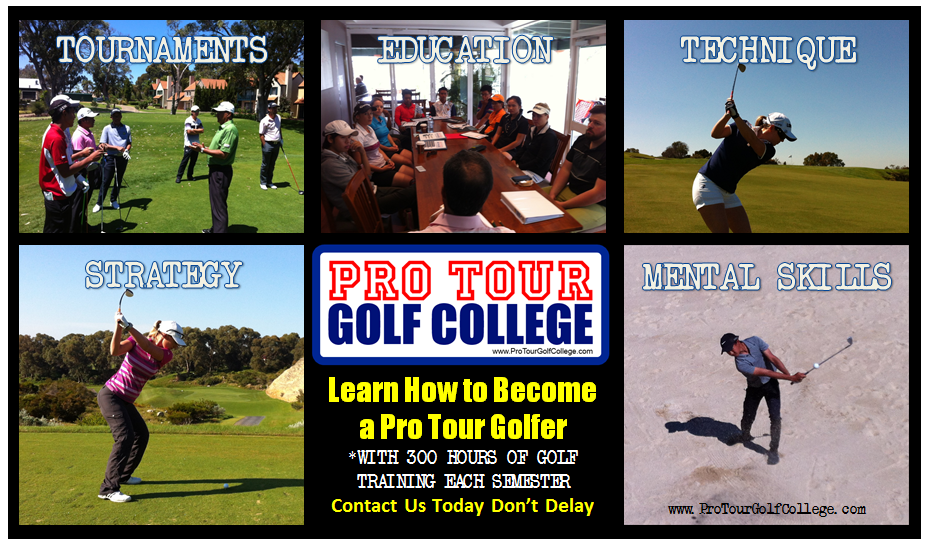
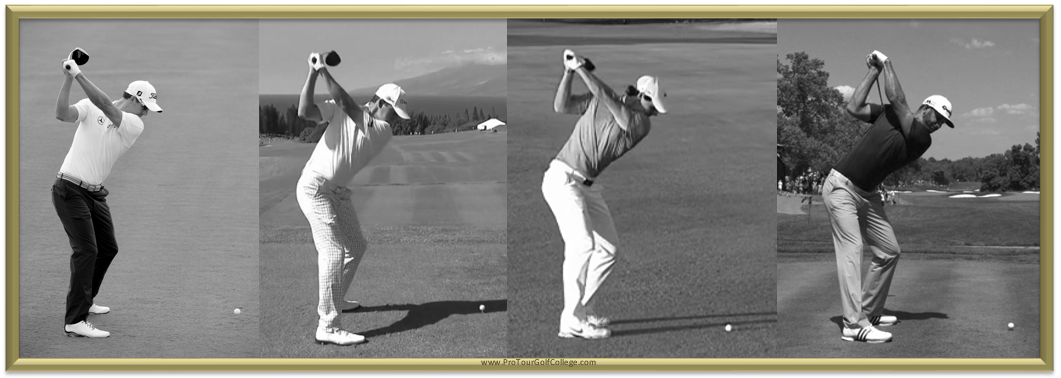
 RSS Feed
RSS Feed



